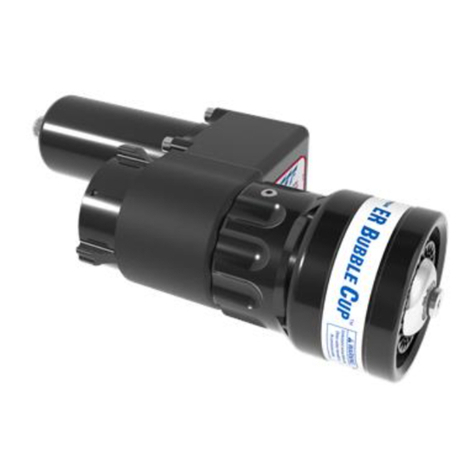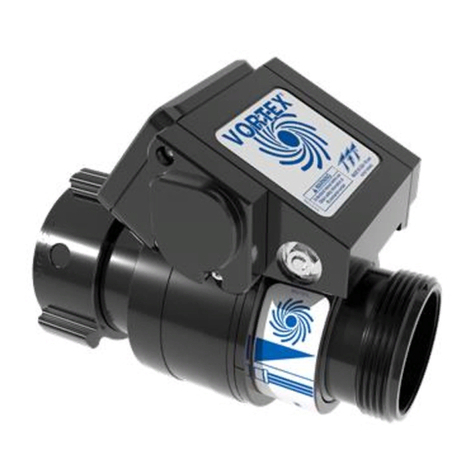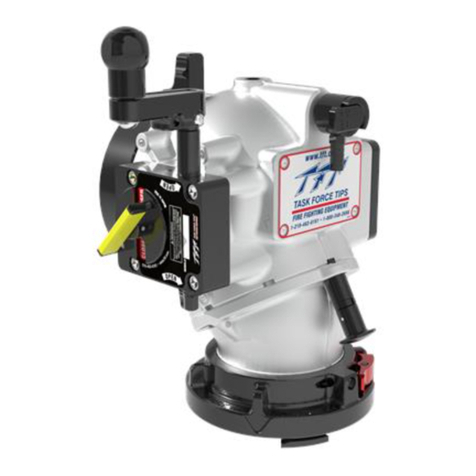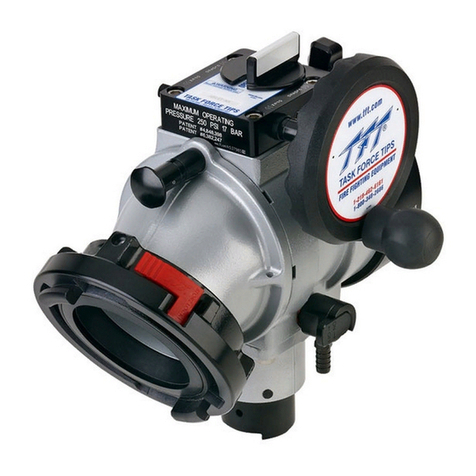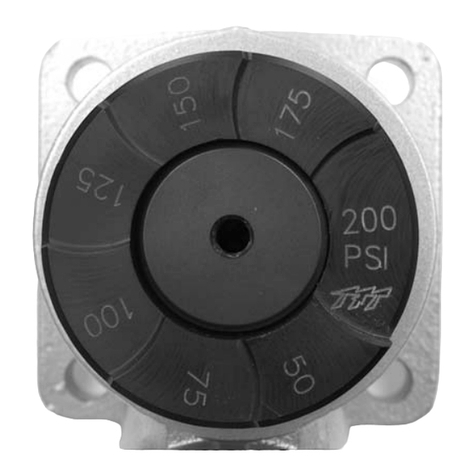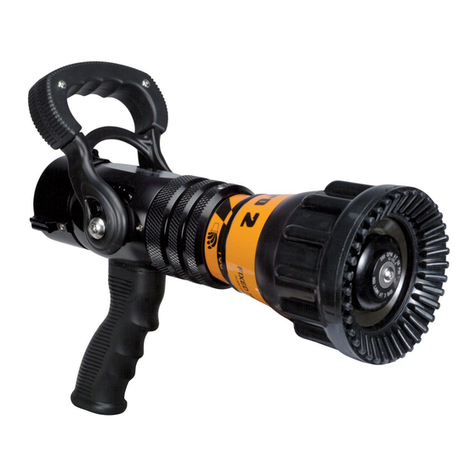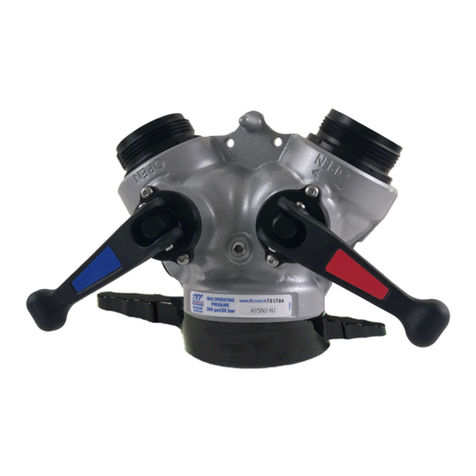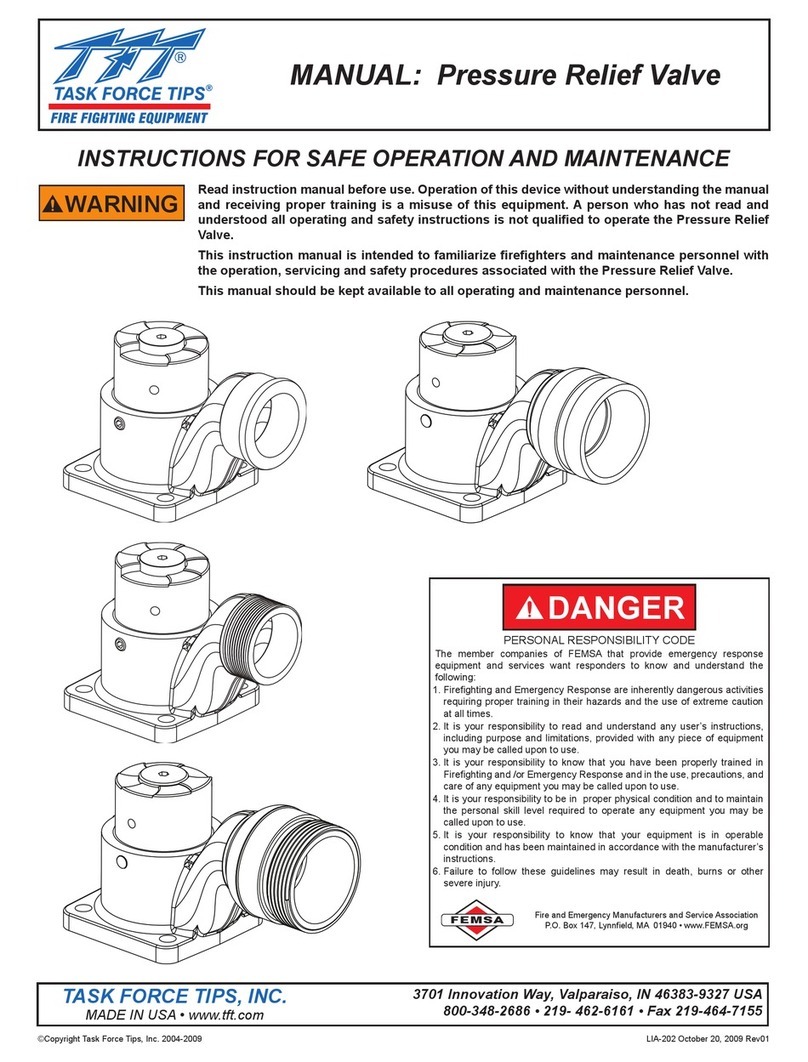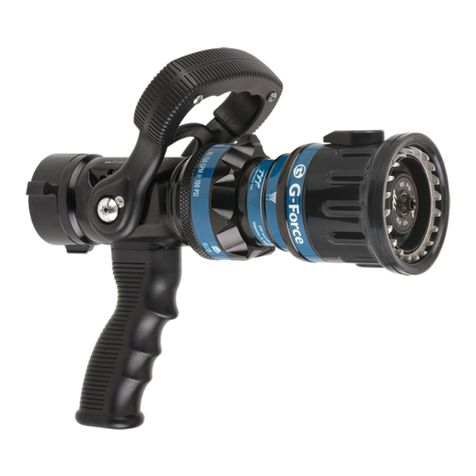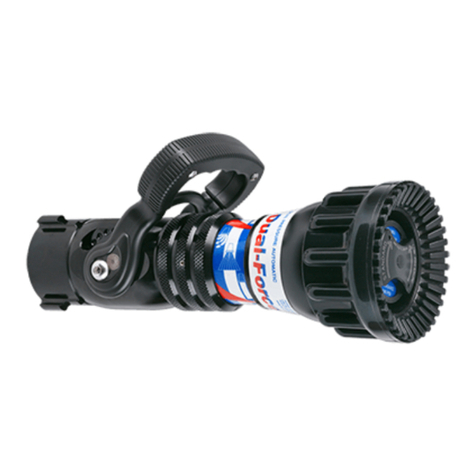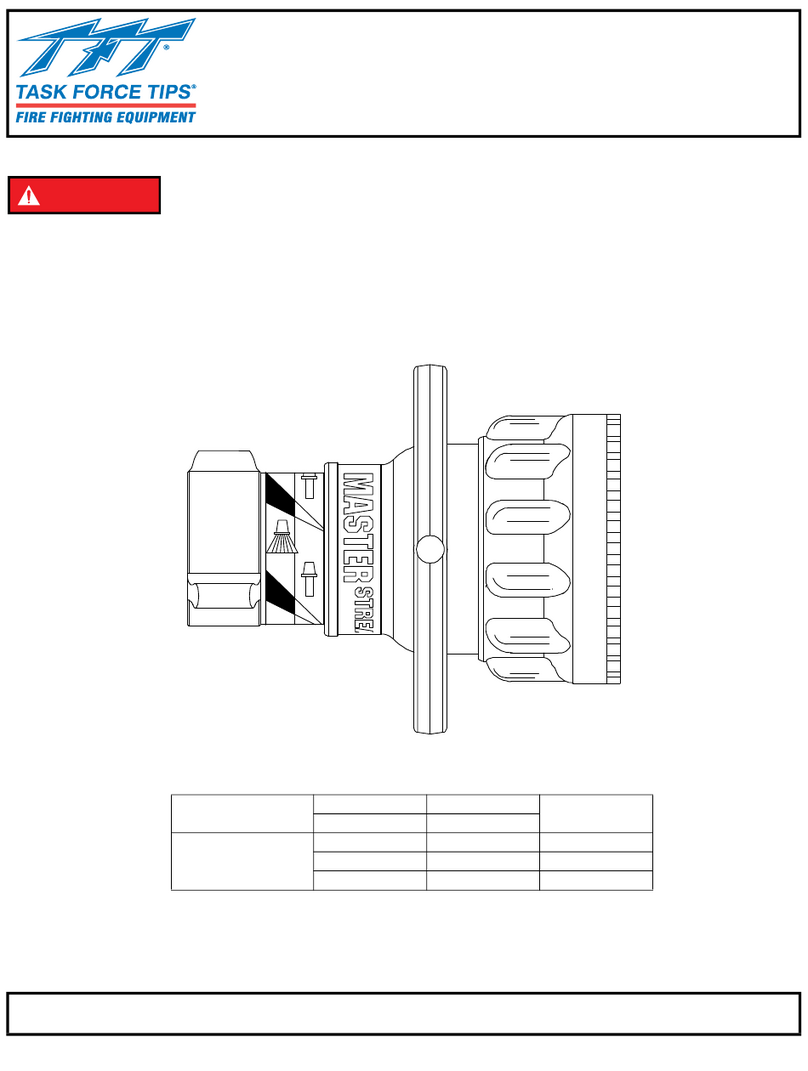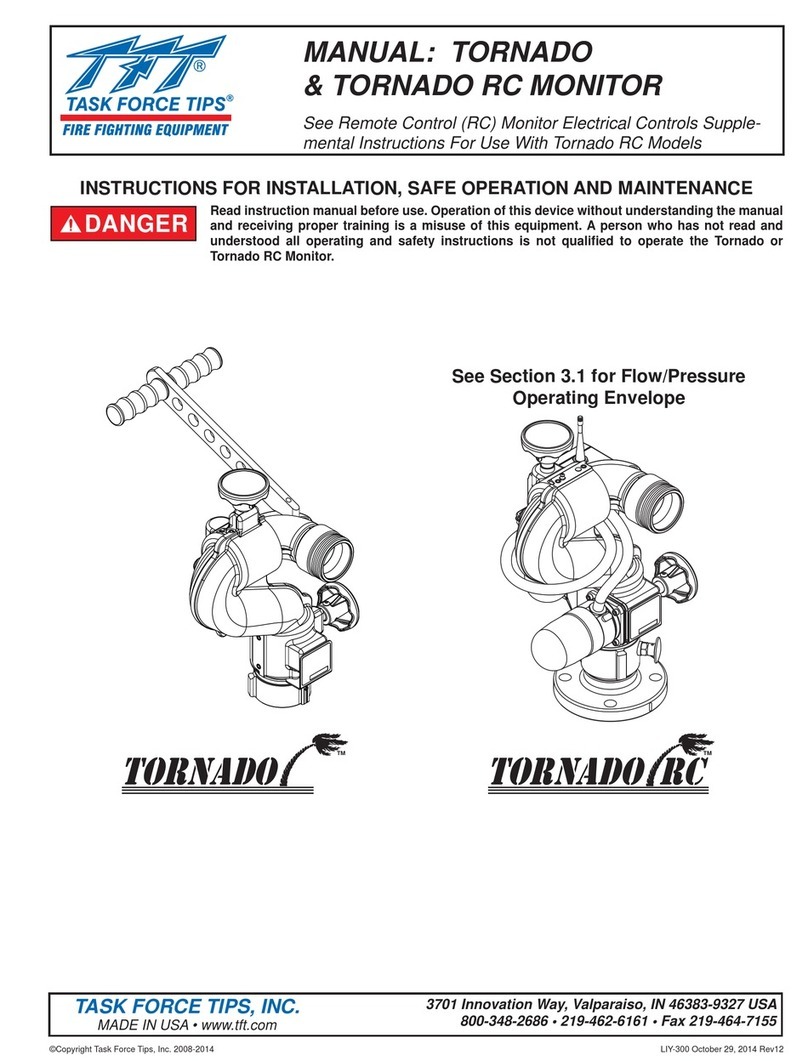
©Copyright Task Force Tips, Inc. 2010 LIA-420 July 12, 2010 Rev00
2
DANGER
PERSONAL RESPONSIBILITY CODE
The member companies of FEMSA that provide emergency response
equipment and services want responders to know and understand the
following:
1. Firefighting and Emergency Response are inherently dangerous activities
requiring proper training in their hazards and the use of extreme caution
at all times.
2. It is your responsibility to read and understand any user’s instructions,
including purpose and limitations, provided with any piece of equipment
you may be called upon to use.
3. It is your responsibility to know that you have been properly trained in
Firefighting and /or Emergency Response and in the use, precautions, and
care of any equipment you may be called upon to use.
4. It is your responsibility to be in proper physical condition and to maintain
the personal skill level required to operate any equipment you may be
called upon to use.
5. It is your responsibility to know that your equipment is in operable
condition and has been maintained in accordance with the manufacturer’s
instructions.
6. Failure to follow these guidelines may result in death, burns or other
severe injury.
FEMSA
Fire and Emergency Manufacturers and Service Association
P.O. Box 147, Lynnfield, MA 01940 • www.FEMSA.org
Table Of Contents
1.0 MEANING OF SAFETYSIGNAL WORDS
2.0 SAFETY
3.0 GENERALINFORMATION
3.1 PARTS IDENTIFICATION
3.2 SPECIFICATIONS
3.3 CORROSION
3.4 USE WITH SALT WATER:
4.0 INSTALLATION
4.1 CHANGING OFFSET OF CRANK HANDLE
5.0 USE
5.1 ATTACH TOAHYDRANT
5.2 HYDRANTASSIST OPERATION
5.3 RELAY OPERATION
5.4 CLAPPER VALVE POSITION INDICATOR
5.5 FLOW INCREASE FROM BOOSTING
5.6 VALVE PRESSURE LOSS
6.0 MAINTENANCE
7.0 EXPLODED VIEWS & PARTS LISTS
7.1 OASIS HYDRANTASSIST VALVE
7.2 INLET/OUTLET OPTIONS
7.3 CLAPPER
7.4 PARALLEL DRIVE GEARBOX
8.0 WARRANTY
1.0 MEANING OF SAFETY SIGNAL WORDS
A safety related message is identified by a safety alert symbol and a signal word to indicate the level of risk involved with a
particular hazard. Per ANSI standard Z535.6-2006, the definitions of the four signal words are as follows:
DANGER DANGER indicates a hazardous situation which, if not avoided, will result in death or serious
injury.
WARNING WARNING indicates a hazardous situation which, if not avoided, could result in death or
serious injury.
CAUTION CAUTION indicates a potentially hazardous situation which, if not avoided, may result in minor
or moderate injury.
NOTICE NOTICE is used to address practices not related to personal injury.
2.0 SAFETY
WARNING Quick changes in valve position can cause high pressure spikes due to water hammer and
may result in damaged equipment which could lead to injury or death. Open and close the
valve slowly to avoid water hammer.
WARNING Injury or death may occur by attempting to use a damaged valve.
Per NPFA 1962, the device shall be inspected and tested at least quarterly.
Before use, inspect for damage resulting from:
• Failure to drain valve followed by exposure to freezing conditions
• Exposure to temperatures in excess of 160 degrees F
• Missing parts, physical abuse
WARNING This equipment is intended for use by trained personnel for firefighting. Its use for other
purposes may involve hazards not addressed by this manual. Seek appropriate guidance and
training to reduce risk of injury.
WARNING Kinks in supply hose may reduce water flow and cause injury or death to persons dependant
on water flow. Avoid tight bends to minimize risk of hoseline kinks.
WARNING The valve may be damaged if frozen while containing significant amounts of water. Such
damage may be difficult to detect visually and can lead to possible injury or death. Any time
the valve is subject to possible damage due to freezing, it must be hydrostatically tested by
qualified personnel before being considered safe for use.
